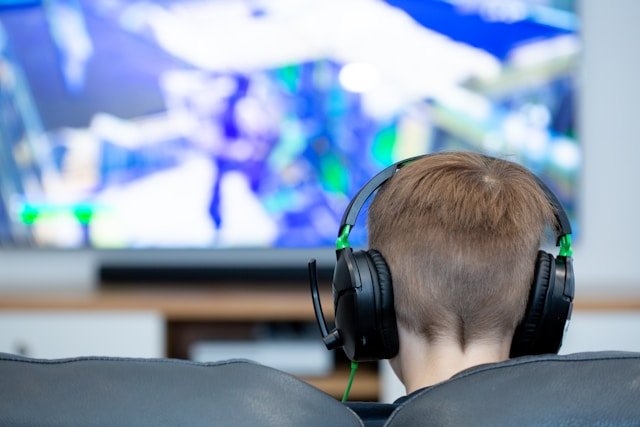In today's digital age, headphones have become an essential accessory for many children. Whether it's listening to music, watching videos, or playing games, kids are spending more and more time with headphones on. However, there is growing concern about the potential damage this may cause to children's hearing. Understanding the basics of hearing and the risks associated with headphone usage is crucial in ensuring the well-being of our children.
Understanding the Basics of Hearing
Before delving into the potential risks of headphones, it is important to grasp how hearing works. Hearing is a complex process that starts with sound waves entering the ear. These sound waves are then transformed into electrical signals that travel to the brain, allowing us to perceive and interpret different sounds.
How Does Hearing Work?
The ear is divided into three main parts: the outer ear, the middle ear, and the inner ear. The outer ear captures sound waves and directs them towards the middle ear. The middle ear consists of the eardrum and three tiny bones, which transmit the sound vibrations to the inner ear. Finally, the inner ear contains the cochlea, a snail-shaped structure filled with fluid and thousands of hair cells. These hair cells convert sound vibrations into electrical signals that are sent to the brain for processing.
Within the cochlea, there are special cells called hair cells that are crucial for hearing. These hair cells are responsible for converting mechanical sound vibrations into electrical signals that can be interpreted by the brain. Interestingly, different hair cells are sensitive to different frequencies of sound, allowing us to perceive a wide range of pitches and tones.
The Rising Trend of Headphone Usage Among Children
In recent years, the use of headphones among children has skyrocketed. Advancements in technology have made headphones more accessible and appealing to kids of all ages. This surge in headphone usage among children has not only been driven by technological advancements but also by shifting societal norms. With the increasing popularity of online learning and digital entertainment, children are spending more time engaging with screens and audio content, making headphones a valuable accessory for their daily activities.
The Influence of Technology on Kids
The rise of personal devices such as smartphones, tablets, and portable gaming consoles has significantly contributed to the increase in headphone usage among children while the integration of virtual reality (VR) and augmented reality (AR) technologies in educational and entertainment platforms has created a demand for immersive audio experiences, further fueling the adoption of headphones among young users.
The Potential Risks of Headphones to Children's Hearing
While headphones provide an immersive audio experience, the potential risks associated with their use cannot be overlooked. Children are more vulnerable to hearing damage due to their developing auditory systems and their tendency to listen at higher volumes and their parents and caregivers play a crucial role in monitoring and controlling the volume levels at which children use headphones. Setting volume limits on devices or using headphones with built-in volume limiters can help reduce the risk of overexposure to loud sounds.
Decibel Levels and Hearing Damage
Exposure to loud sounds above 85 decibels (dB) for an extended period can lead to noise-induced hearing loss (NIHL), a permanent condition that affects one's ability to hear certain frequencies. Many portable devices and headphones are capable of reaching volumes well above this threshold, putting children at a higher risk of hearing damage if not properly regulated.
It's important for parents to educate their children about the potential dangers of noise-induced hearing loss is cumulative and often irreversible. Over time, repeated exposure to loud sounds can cause permanent damage to the delicate hair cells in the inner ear, leading to partial or complete hearing loss.
Regular hearing screenings for children who use headphones frequently can help detect early signs of hearing damage and allow for timely intervention.
Signs and Symptoms of Hearing Loss in Children
Recognising the signs and symptoms of hearing loss in children is essential for early intervention and treatment. While each child may exhibit different indications, there are common red flags parents should be aware of.
Hearing loss in children can be a challenging issue to identify, as it may not always be immediately apparent. It is crucial for parents to observe their child's behaviour and physical well-being closely to catch any potential signs of hearing loss early on.
Behavioural Changes to Look Out For
Children with hearing loss may show behavioural changes such as difficulty following instructions, increased TV or device volume, frequent asking for repetition, or withdrawal from social interactions. These changes can be subtle and easily attributed to other factors, making it important for parents to pay close attention to their child's behaviour as some children with hearing loss may exhibit frustration or irritability due to their struggles with communication. This can manifest in tantrums or acting out, as the child may find it challenging to express their needs effectively.
Physical Symptoms and Complaints
In addition to behavioural changes, children with hearing loss may also experience physical symptoms such as ringing in the ears (tinnitus), earaches, or a feeling of fullness in the ears. If your child frequently complains of these symptoms, it is advisable to seek professional assessment.
Preventive Measures and Safe Practices
While the potential risks of headphone usage in children exist, there are preventive measures and safe practices that can minimize the likelihood of hearing damage.
Setting Volume Limits on Devices
Parents should establish volume limits on devices to ensure safe listening levels. Many devices offer parental controls or volume limit settings that can restrict the maximum volume output. Encouraging regular conversations with your child about the importance of protecting their hearing can also promote responsible headphone usage.
Encouraging Breaks from Headphone Use
It is recommended to encourage breaks from headphone use to allow the ears to rest and recover from prolonged exposure to sound. Engaging in activities that do not require headphones, such as outdoor play or reading, can help reduce the overall time spent with headphones on.
In conclusion, while headphones have become an integral part of children's daily lives, the potential risks they pose to hearing health cannot be ignored. Understanding the basics of hearing, being aware of the rising trend of headphone usage among children, recognising the signs of hearing loss, and adopting preventive measures can all contribute to safeguarding children's hearing. By promoting responsible headphone usage and prioritizing hearing health, we can ensure that children continue to enjoy the benefits of technology without compromising their well-being.
If you are worried about your hearing contact your local Hidden Hearing branch. Hidden Hearing offers free hearing tests at its 80 clinics nationwide.





